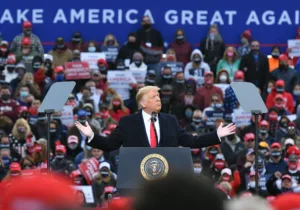On June 13, the Arab states knew that all eyes would be turned toward Singapore for the summit between Donald Trump and Kim Jong-un. So, Saudi-led forces that support the Yemeni government launched an attack on the port city Hodeida without making international headlines. The attack was the beginning of a potentially long and bloody offensive against the Houthi rebels, a Shiite group supported by Iran.
Though the Houthis and Yemeni government have been squabbling since 2004, the civil war in Yemen did not begin in earnest until 2014 when the Houthis took Sana’a, the country’s capital. Even before the civil war, the Yemeni government’s main supporter was Saudi Arabia. Now, thanks to its proximity and support for the government, the Houthis have decided to antagonize Saudi Arabia. Saudi authorities reported that the Houthis have fired more than 150 ballistic missiles deep into the kingdom, aiming for Riyadh. So in 2015, Saudi Arabia formed a coalition of Arab states and began a military campaign to fight back the Houthis. The coalition is made up of Kuwait, the United Arab Emirates, Bahrain, Egypt, Morocco, Jordan, Sudan, and Senegal.
The crown prince of Saudi Arabia, Mohammed bin Salman, and the crown prince of the United Arab Emirates, Mohammed bin Zayed Al Nahyan, are the main orchestrators of the Hodeida attack and the general coalition against the Houthis. Since the Houthis are supported by Iran, these two powerful Sunni states have essentially engaged in a proxy war against their Shiite enemy. Many have accused Saudi Arabia and the UAE of worsening the humanitarian crisis in Yemen by using the country as the battleground for their “cold war” with Iran. Though the Yemen conflict is in many ways a proxy war between Iran and the Saudi coalition, it is much more complicated, and not all the blame should be placed on the coalition for worsening the humanitarian crisis in Yemen.
Yemen has been the poorest Arab country, even before the civil war. It does not have the natural gas and oil that many of its northern neighbors have, and it is primarily a desert, meaning that even in peacetime there is a dangerous lack of water and money. Now, the civil war has essentially destroyed Yemen. The civilian casualties have been extremely high. As of 2018, at least 10,000 Yemenis have been killed by the fighting, two million have been displaced, and the fastest spreading cholera epidemic recorded in history has been wiping out the remaining population.
Though the Saudi-led coalition is the strongest force fighting the Houthis, lots of other players have entered the game, including the United States, al-Qaeda, and ISIS. Sunni al-Qaeda and ISIS entered Yemen to fight the Shiite Houthis, and then the US began raids on ISIS and al-Qaeda. Along with fighting the terrorists, the US, UK, and France also began supporting the Saudi coalition and providing them with intelligence and weapons to fight the Houthis.
So now the Yemen conflict has involved at least 12 foreign countries and two major terrorist groups. With so many prominent world players involved in Yemen, it is impossible to lay the blame of the humanitarian crisis just at Saudi Arabia’s feet.
But while more than one country or group could be blamed for worsening the crisis, the attack launched on Hodeida could make things much worse. The port city has been the main port for food and humanitarian aid coming in for the eight million Yemenis on the verge of starvation. According to AP, about 70 percent of Yemen’s food comes through Hodeida and about two thirds of the 27 million in Yemen rely on the food coming through the port.
The Saudi and Emirati governments claim that they are enacting a plan to protect the people in Hodeida and keep routes for food and supplies open during the attack. This does not seem promising since the beginning of the bombardment has already been so intense that there were 30 strikes in 30 minutes on day one. About 600,000 people live around Hodeida, and the UN has predicted that as many as 250,000 may lose everything, even their lives.
Regaining Hodeida would be a huge blow to the Houthis, but even if the attack is successful, many are still predicting doom for the larger Yemeni population. Aid workers have been pulled out of the area and, as Robert Mardini, the region’s Red Cross director, said, the offensive “is likely to exacerbate an already catastrophic humanitarian situation in Yemen.”
The attack on Hodeida seems necessary, but so is preserving the Yemeni population from starvation and destruction. Is there any good solution to the present conflict? Should the Saudi coalition pull out of the offensive and find another way to get rid of the Houthis?
Emirati and Yemeni forces said that this is the only way to get Houthis out of Hodeida.
“[The Yemeni government] has exhausted all peaceful and political means to remove the Houthi militia from the port of Hodeida. Liberation of the port of Hodeida is a milestone in our struggle to regain Yemen from the militias,” they told AP reporters.
The Yemeni president also said, “The military solution is the more likely one for the Yemen crisis in light of the intransigence of the Houthi and Saleh coup militias which continue to take orders from Iran.”
It is natural to wish for a peaceful solution to the crisis in Yemen so that there will be no more bloodshed or starvation. But the Houthis are unwilling to negotiate, and al-Qaeda and ISIS are not in favor of negotiations either. These are rebel and terrorist organizations wanting control and domination of Yemen and each other, not sovereign states seeking peace. It’s tragic that fighting seems to be the only solution. But it seems that the best option is for the Saudi-led coalition to fight to regain Hodeida and push out the Houthis so that the Yemeni government can be reestablished, the civil war ended, and aid come to the millions of Yemenis suffering and starving.
—
Abigail Liebing is an intern at Providence and a student at Hillsdale College, pursuing a B.A. in History and a minor in Journalism.
Photo Credit: Destroyed house in the south of Sana’a, 12-6-2015, via Wikimedia Commons






 Sponsor a student for Christianity & National Security 2024
Sponsor a student for Christianity & National Security 2024